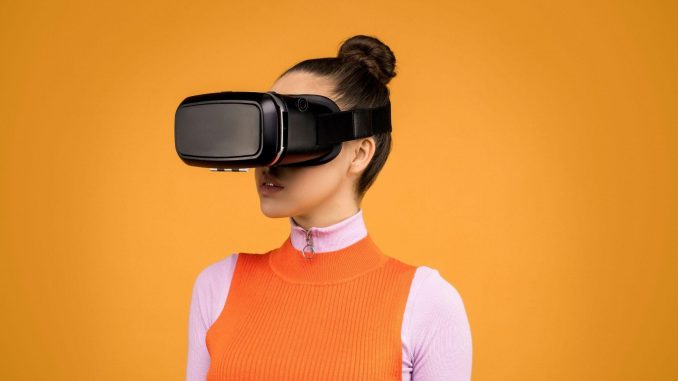
Virtual reality (VR) is no longer just a fun concept from science TV shows or futuristic movies. It has become an important part of many industries, including those that didn’t previously rely on advanced technology. When discussing virtual reality today, it’s important to understand its scope. It involves immersive, augmented, and mixed reality technologies, which go far beyond video game headsets. Let’s take a look at some ways Virtual Reality will transform businesses in the future
As VR technology develops and becomes more affordable, it can transform businesses internally and build value propositions for customers. Here are four ways VR could impact how companies operate in the future.
1. Communication
The COVID-19 pandemic forced many businesses to operate with fully remote staff. While this brought about unique challenges, it alerted many organizations to the benefits of remote work.
VR will continue to transform how businesses communicate, eliminating the need for unnecessary travel and downtime. Besides permitting face-to-face interaction from afar, VR enables colleagues to collaborate on creative projects while reading each other’s body language to enhance relationships in the remote workplace.
Applications such as Spatial allow you to interact with colleagues through 3D avatars. After taking your profile photo, the app creates a 3D version of you from the waist up. This allows you to move your face, head, and arms to perform gestures. An Oculus headset contains hand-tracking technology, enabling accurate movement simulations.
Spatial virtual reality lets you walk around a virtual workplace, engaging with screens, images, and other avatars. It essentially provides a simulation of a real-life workspace.
2. Training and Upskilling Employees
This is no doubt one way that Virtual Reality will transform businesses in the future. Upskilling and training are extremely important as technology rapidly develops. VR opens up learning opportunities that were never possible before. What’s more, it makes critical skill development much more affordable for employees in high-risk jobs such as pilots, firefighters, and soldiers.
VR simulations allow industry professionals to experience specific scenarios in a safe environment that would be too difficult, dangerous, or expensive to create in real life.
According to a PWC study, VR learners go through training four times faster than in a classroom. They are 275% more confident to apply their learned skills after training and are almost four times more emotionally connected to the content they cover than in a classroom.
3. Experiential Marketing
Through computers, smartphones, and the internet, VR is more accessible than ever. As 5G becomes more common, these devices offer a greater opportunity for remotely executing tasks and connecting to virtual networks. Such advancements are changing how customers interact with technology, allowing them to use gestures, vocal prompts, and other sensory cues to engage with businesses.
VR provides the perfect opportunity for businesses to create a fully immersive experience. It is difficult to find and retain a customer’s attention when they are constantly exposed to advertisements via social media, websites, and in person. An immersive experience enables marketers to actively engage with consumers instead of attracting them through passive advertisements, such as website banners or Facebook ads.
Virtual reality triggers senses and emotions, enhancing the customer experience, leading to increased engagements and conversions. This approach will be highly effective for business-to-consumer (B2C) and business-to-business (B2B) marketing.
An example of VR experiential marketing in a B2B context is Key Technology. They used a 360º VR demo that gave potential clients a hands-on look at their food processing system. The fully immersive experience was engaging and also showcased their industry-leading technologies and processes.
4. Better Customer Service
VR and augmented reality (AR) will transform how customer service is carried out. Businesses can offer improved customer service, from virtual changing rooms for clothing stores to simulated versions of a bathroom renovation. Lowe’s hardware store uses VR for their Holoroom experience. Customers design their dream renovation before walking through a 3D virtual model of it using a headset.
VR and AR can also help with remote guidance, allowing customer service representatives to offer improved services. For example, if a customer experiences issues with a recent purchase, customer service representatives can pass information, such as user manuals, product guides, and instructions to them via AR glasses or a VR headset. This can help automate customer service while improving it.
Is VR Here to Stay?
Although VR offers plenty of avenues that could transform businesses and engage with customers, the technology is still developing and remains expensive. As early adoption is a significant risk, it may be more beneficial for organizations to develop the infrastructure that enables VR integration down the line.
With essentially unlimited potential, however, Virtual Reality will almost certainly transform how businesses operate in the future.
What if you could RIGOROUSLY Increase Business Revenue leveraging proven INBOUND Marketing Growth Tactics?
Custom Action Plan: Find out what part of your marketing strategy needs works, how to step up things for 5 & 6 Figure Months, and get customized advice that will walk you through getting more traffic, leads AND Sales in less than 60 days.
YOU ARE SELECTED
Welcome to Your Charisma! Check your Email for your Custom Action Plan
Your information will not be sold or shared.

Leave a Reply